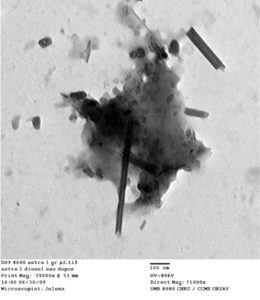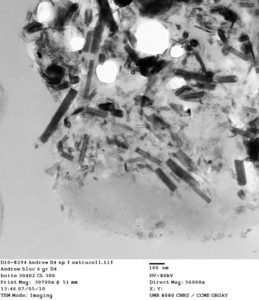 This past week there was discussion of the number of high school football players that die annually while playing football (at least 5). But the bigger risk - because it involves so many players - is the damage to brains that occurs from concussions and from just being hit in football. The response from football enthusiasts is that there are safeguards now - that football players don't play after a concussion until they "heal" (show no obvious symptoms). But do they really heal? And much of the damage is from repeated hits, without having a concussion (sub-concussive blows or hits), what about the damage from that?
This past week there was discussion of the number of high school football players that die annually while playing football (at least 5). But the bigger risk - because it involves so many players - is the damage to brains that occurs from concussions and from just being hit in football. The response from football enthusiasts is that there are safeguards now - that football players don't play after a concussion until they "heal" (show no obvious symptoms). But do they really heal? And much of the damage is from repeated hits, without having a concussion (sub-concussive blows or hits), what about the damage from that?
This study found that repeated head hits in football can cause changes in brain chemistry and metabolism, even in high school players not diagnosed with concussions. And even after the lengthy off-season (somewhere between two and five months after the season has ended)—the majority of players are still showing that they had not fully recovered. The researchers also made it clear that 2 weeks is not enough time to heal from a concussion. Scary long-term implications - what is happening to brains that never truly heal from past seasons as the players start playing in the next season? From Futurity:
High School Football: Teen Brains Don't Heal During Offseason
Brain scans of high school football players taken before, during, and after the season raise concerns they don’t fully recover from repeated head hits. The researchers used an imaging technique called proton magnetic resonance spectroscopy (1H MRS) to study the brains of 25 high school football players and compared them to the brains of teenagers involved in non-contact sports. The findings suggest repeated head hits in football can cause changes in brain chemistry and metabolism, even in players not diagnosed with concussions.
“We are seeing damage not just to neurons, but also to the vasculature and glial cells in the brain,” says Eric Nauman, professor of mechanical engineering, basic medical sciences, and biomedical engineering at Purdue University. “I was particularly disturbed that when you get to the offseason—we are looking somewhere between two and five months after the season has ended—the majority of players are still showing that they had not fully recovered.”
The 1H MRS data provide details about the blood flow, metabolism, and chemistry of neurons and glial cells important for brain function. The data also revealed a “hypermetabolic response” during the preseason, as though the brain was trying to heal connections impaired from the previous season. “We found that in the preseason for the football players in our study, one part of the brain would be associating with about 100 other regions, which is much higher than the controls,” says Thomas Talavage, professor of electrical and computer engineering and biomedical engineering and co-director of the Purdue MRI Facility.
“The brain is pretty amazing at covering up a lot of changes. Some of these kids have no outward symptoms, but we can see their brains have rewired themselves to skip around the parts that are affected.”
One of the research papers shows that knowing a player’s history of specific types of hits to the head makes it possible to accurately predict “deviant brain metabolism,” suggesting that sub-concussive blows can produce biochemical changes and potentially lead to neurological problems, which indicates a correlation between players taking the heaviest hits and brain chemistry changes.
The data shows that the neurons in the motor cortex region in the brains of football players produced about 50 percent less of the neurotransmitter glutamine compared to controls. “We are finding that the more hits you take, the more you change your brain chemistry, the more you change your brain’s ability to move blood to the right locations,” Nauman says.
“Recent proton magnetic resonance spectroscopy studies argue that the recommended two-week window of rest is insufficient for full metabolic recovery after concussion,” Nauman says. “Those returning to play prior to full recovery could incur a second concussion with symptoms and metabolic changes more lasting than the first.”

 Another excellent reason to breastfeed premature infants - to increase the odds of preventing retinopathy of prematurity (ROP), which is the reason preemies can go blind. It occurs when blood vessels in the retinas of premature infants start to grow out of control. If the abnormal growth continues, the retinas detach, and this can cause blindness.
Another excellent reason to breastfeed premature infants - to increase the odds of preventing retinopathy of prematurity (ROP), which is the reason preemies can go blind. It occurs when blood vessels in the retinas of premature infants start to grow out of control. If the abnormal growth continues, the retinas detach, and this can cause blindness. The American Academy of Pediatrics released a new report that the overuse of antibiotics in animals poses a real health risk to children. Giving routine antibiotics to animals leads to antibiotic resistant bacteria - which means that antibiotics may not work when given to people. Most of the antibiotics sold in the U.S. each year - 80 percent- are used in animals that people than eat. The great majority of antibiotics given to animals are the same ones given to humans.The main way to ensure that the meat that you are purchasing is antibiotic-free is to
The American Academy of Pediatrics released a new report that the overuse of antibiotics in animals poses a real health risk to children. Giving routine antibiotics to animals leads to antibiotic resistant bacteria - which means that antibiotics may not work when given to people. Most of the antibiotics sold in the U.S. each year - 80 percent- are used in animals that people than eat. The great majority of antibiotics given to animals are the same ones given to humans.The main way to ensure that the meat that you are purchasing is antibiotic-free is to 
 This study showed that children reducing sugar consumption (but not fruits), and without reducing calories, after 10 days improved all sorts of metabolic health markers: blood pressure, LDL cholesterol, triglycerides, liver function, fasting blood glucose, and insulin levels. As one of the researchers said: "I have never seen results as striking or significant in our human studies; after only nine days of fructose (sugar) restriction, the results are dramatic and consistent from subject to subject." Once again, not all calories are the same.
This study showed that children reducing sugar consumption (but not fruits), and without reducing calories, after 10 days improved all sorts of metabolic health markers: blood pressure, LDL cholesterol, triglycerides, liver function, fasting blood glucose, and insulin levels. As one of the researchers said: "I have never seen results as striking or significant in our human studies; after only nine days of fructose (sugar) restriction, the results are dramatic and consistent from subject to subject." Once again, not all calories are the same. Beware of nail polish because it may be contaminating your body with an endocrine disrupting chemical. A study co-authored by researchers at Duke University and Environmental Working Group (EWG) detected evidence of a common nail polish chemical called triphenyl phosphate, or TPHP, in the bodies of every woman who volunteered to paint her nails for the study.There is growing evidence suggesting that TPHP may affect hormone regulation, metabolism, reproduction and development. Unfortunately, even if it is not listed on the label, it may still be in the product. It is also used as a fire retardant (and the evidence from studies says to avoid fire retardants). Go to the
Beware of nail polish because it may be contaminating your body with an endocrine disrupting chemical. A study co-authored by researchers at Duke University and Environmental Working Group (EWG) detected evidence of a common nail polish chemical called triphenyl phosphate, or TPHP, in the bodies of every woman who volunteered to paint her nails for the study.There is growing evidence suggesting that TPHP may affect hormone regulation, metabolism, reproduction and development. Unfortunately, even if it is not listed on the label, it may still be in the product. It is also used as a fire retardant (and the evidence from studies says to avoid fire retardants). Go to the Carbon nanotubes (the long rods) and nanoparticles (the black clumps) appear in vehicle exhaust from tailpipes of cars in Paris.
Carbon nanotubes (the long rods) and nanoparticles (the black clumps) appear in vehicle exhaust from tailpipes of cars in Paris.
 Several studies have found that when children eat organic foods, especially fruits and vegetables, the amount of pesticides in their bodies declines significantly. Most organophosphorus pesticides have been phased out for residential use, but they are still widely used in agriculture, and so these pesticides are detected in both foods and people.
Several studies have found that when children eat organic foods, especially fruits and vegetables, the amount of pesticides in their bodies declines significantly. Most organophosphorus pesticides have been phased out for residential use, but they are still widely used in agriculture, and so these pesticides are detected in both foods and people. More and more studies are finding negative health effects from hormone disrupting chemicals (which we are exposed to every single day, and subsequently which are in all of us), such as parabens, phthalates, Bisphenol-A (BPA), and chemical substitutes for BPA such as Bisphenol-S (BPS) and BPF. The following are a few recent studies and one article from my files. Also check out the other endocrine disrupting chemical studies I've posted (SEARCH: 'endocrine disruptors', and 'phthalates').
More and more studies are finding negative health effects from hormone disrupting chemicals (which we are exposed to every single day, and subsequently which are in all of us), such as parabens, phthalates, Bisphenol-A (BPA), and chemical substitutes for BPA such as Bisphenol-S (BPS) and BPF. The following are a few recent studies and one article from my files. Also check out the other endocrine disrupting chemical studies I've posted (SEARCH: 'endocrine disruptors', and 'phthalates'). Having raised two energetic sons, I am more and more distressed over how "academic" and serious kindergarten and first grade has become. It seems that recess and creative play times have basically ended, with young children having to sit still in their seats for hours and hours on end doing mindlessly boring worksheets. Numerous standardized tests. And this is when they're only 5 and 6 years old. Where is the joy of learning? Where is the time for creativity, intellectual curiosity, imagination, invention, and "learning and working things out by oneself"? Much of this occurs during play - yes, play.
Having raised two energetic sons, I am more and more distressed over how "academic" and serious kindergarten and first grade has become. It seems that recess and creative play times have basically ended, with young children having to sit still in their seats for hours and hours on end doing mindlessly boring worksheets. Numerous standardized tests. And this is when they're only 5 and 6 years old. Where is the joy of learning? Where is the time for creativity, intellectual curiosity, imagination, invention, and "learning and working things out by oneself"? Much of this occurs during play - yes, play.